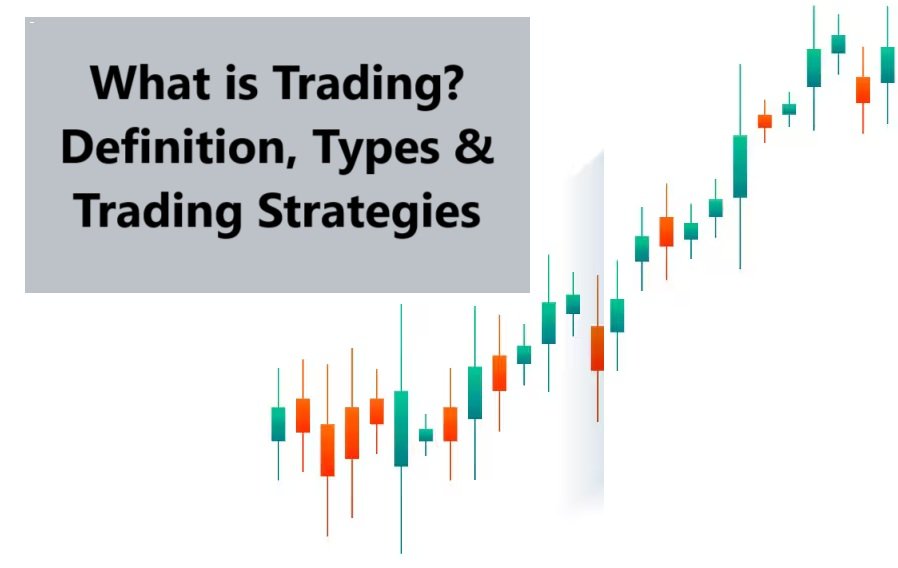
Introduction
In the world of finance, trading plays a critical role in enabling individuals and institutions to exchange assets and securities. Trading is a dynamic and fast-paced activity that has been integral to economic growth, market development, and wealth creation. Whether you are looking to make quick profits or invest for the long term, understanding trading is key to navigating the financial markets. In this article, we will explore the definition of trading, examine different types of trading, and uncover the strategies employed by traders to make informed decisions.
1. What is Trading?
At its core, trading refers to the buying and selling of financial instruments, such as stocks, commodities, currencies, and other assets, with the goal of profiting from changes in their prices. Trading can occur in various markets, including stock exchanges, foreign exchange markets (Forex), commodity markets, and cryptocurrency exchanges.
The Purpose of Trading:
- Profit Generation: Traders aim to buy low and sell high or sell high and buy low, depending on their position and market conditions. The goal is to capitalize on price fluctuations to make a profit.
- Hedging: Traders often engage in hedging to protect against unfavorable price movements, particularly in volatile markets. For example, a company that imports goods may hedge its foreign currency exposure to protect against currency fluctuations.
- Speculation: Traders speculate on the future price direction of an asset, betting that prices will rise or fall. While this can be lucrative, it also involves significant risk.
How Trading Works:
Trading involves various market participants, including retail traders (individual investors), institutional investors (banks, hedge funds, pension funds), and market makers. These participants buy and sell assets based on market analysis, economic reports, or sentiment-driven factors. Trades occur via online platforms, brokers, or directly through exchanges.
Read also: Difference Between Equity and Commodity
2. Types of Trading
There are several distinct types of trading that vary in terms of time horizon, risk levels, and strategies. Each type requires different skills, tools, and knowledge.
a. Day Trading:
- Definition: Day trading involves buying and selling financial instruments within the same trading day, often multiple times, to capitalize on short-term price movements.
- Characteristics:
- Positions are held for minutes to hours, with the goal of closing them before the market closes to avoid overnight risk.
- Uses technical analysis to predict market moves.
- Requires constant monitoring and fast decision-making.
- Risks: Due to the short-term nature and high frequency of trades, day trading can be risky and stressful, requiring significant experience and a robust risk management plan.
b. Swing Trading:
- Definition: Swing trading aims to capture gains in an asset over a few days to weeks. Swing traders seek to profit from price “swings” within a trend.
- Characteristics:
- Traders identify trends and wait for opportunities to enter and exit when a significant price movement is expected.
- Often uses a combination of technical and fundamental analysis.
- Positions are typically held for a longer period than day trading but are not as long as position trading.
- Risks: Swing traders are exposed to market fluctuations over several days, so sudden news events or unexpected economic data can impact the positions.
c. Scalping:
- Definition: Scalping is an ultra-short-term trading strategy aimed at making small profits from minor price movements, often executed in seconds or minutes.
- Characteristics:
- Scalpers make numerous trades throughout the day, capitalizing on small price discrepancies.
- It requires a high level of concentration, quick decision-making, and often the use of automated trading systems.
- Profit margins are small per trade, but the cumulative effect of many trades can lead to significant profits.
- Risks: The small profit margins per trade mean that losses can add up quickly if the strategy is not executed precisely.
d. Position Trading:
- Definition: Position trading involves holding positions for an extended period, from months to years, based on the trader’s long-term outlook for an asset.
- Characteristics:
- Focuses on fundamental analysis, such as economic indicators, company earnings, and global trends.
- Suitable for investors who do not wish to trade frequently and are comfortable with long-term market trends.
- Less affected by short-term market volatility.
- Risks: Position traders are exposed to the risk of significant price moves against their positions during periods of market uncertainty or unforeseen events.
e. Options and Futures Trading:
- Definition: Options and futures are derivative contracts that allow traders to speculate on the future price of an asset without directly owning the asset.
- Characteristics:
- Options give the holder the right, but not the obligation, to buy or sell an asset at a specific price before a specified date.
- Futures obligate the buyer to purchase and the seller to sell an asset at a predetermined price on a specific future date.
- These types of trading allow for leveraging, which can amplify both gains and losses.
- Risks: These instruments can be very risky, especially when used for speculative purposes, and require a solid understanding of the markets.
3. Trading Strategies
Traders use different strategies based on their market outlook, risk tolerance, and trading goals. The main categories of trading strategies are technical analysis, fundamental analysis, and quantitative/algorithmic analysis.
a. Technical Analysis:
- Definition: Technical analysis involves using historical price data and chart patterns to forecast future price movements.
- Tools and Techniques:
- Charts: Line, bar, and candlestick charts.
- Indicators: Moving averages, Relative Strength Index (RSI), Bollinger Bands, etc.
- Patterns: Head and Shoulders, Double Tops, Cup and Handle, etc.
- Advantages: Technical analysis can provide traders with entry and exit points based on patterns and price trends.
- Risks: Technical analysis is not foolproof, as markets can behave unpredictably due to news or events that charts cannot predict.
b. Fundamental Analysis:
- Definition: Fundamental analysis involves evaluating the intrinsic value of an asset by analyzing economic, financial, and qualitative factors.
- Key Factors Analyzed:
- Economic indicators: GDP, inflation, unemployment rates, etc.
- Company reports: Earnings, revenue, market share, etc.
- Market trends: Interest rates, commodity prices, global trade, etc.
- Advantages: Long-term traders often rely on fundamental analysis to make investment decisions and identify undervalued assets.
- Risks: Fundamental analysis may take time to reflect in the market, and sudden changes in market conditions can impact long-term projections.
c. Algorithmic and Quantitative Trading:
- Definition: Algorithmic trading involves using computer algorithms to automatically execute trades based on predefined criteria.
- Characteristics:
- Can process large volumes of data much faster than a human trader.
- Relies on quantitative analysis, which involves mathematical models and statistical techniques.
- Commonly used by institutional traders, hedge funds, and high-frequency traders (HFT).
- Risks: Algorithms can make errors, especially in volatile or unexpected market conditions, leading to large losses.
4. Risks of Trading
Trading can be highly profitable, but it is not without its risks. Here are some of the most common risks associated with trading:
- Market Volatility: Markets can experience sudden and unpredictable price movements, which can result in substantial losses.
- Leverage Risk: Leverage allows traders to control larger positions with less capital, but it amplifies both gains and losses.
- Emotional Risk: Fear and greed can drive traders to make irrational decisions, leading to significant losses.
- Liquidity Risk: In illiquid markets, it may be difficult to buy or sell assets without causing large price movements.
Conclusion
Understanding the basics of trading—its definition, types, and strategies—is crucial for anyone interested in the financial markets. Whether you’re a beginner exploring day trading or an experienced investor focusing on long-term position trading, there’s a strategy and approach that fits your goals. However, it’s important to be aware of the risks involved and to continuously educate yourself on market trends, risk management, and trading techniques. Success in trading requires patience, discipline, and a commitment to constant learning and adaptation.
This comprehensive breakdown should help you grasp the essential components of trading, along with the risks and strategies involved in each approach.




